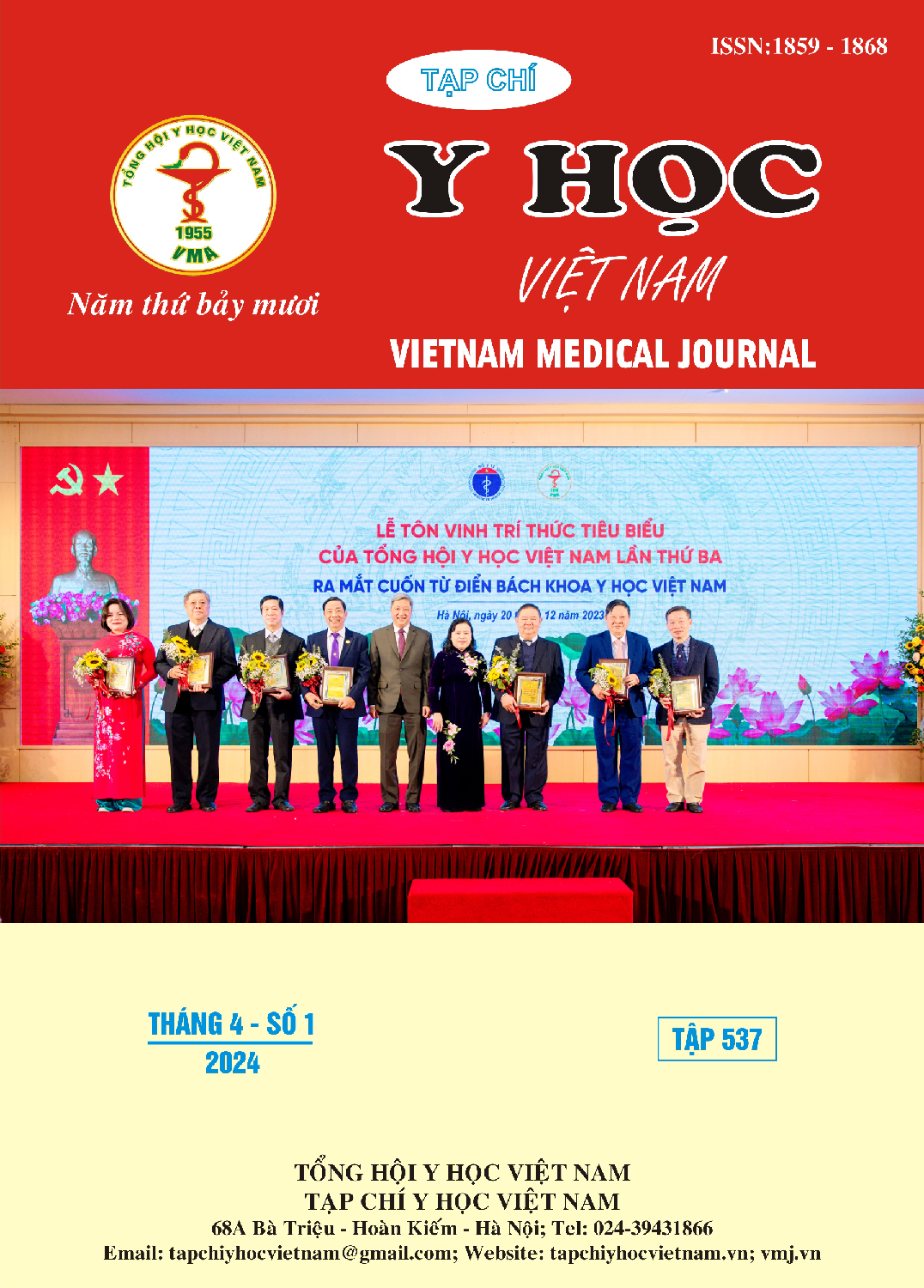OUTCOMES OF TREATMENT OF TIBIA AND FIBULA FRACTURES BY USING CANNULATED TIBIAL NAIL WITH MULTIDIRECTIONAL LOCKING SCREWS SYSTEM AT VIET DUC HOSPITAL
Main Article Content
Abstract
Introduction: Study to assess outcomes of treatment of tibia and fibula fractures by using cannulated tibial nail with multidirectional locking screws system at Viet Duc Hospital. Method: A retrospective and prospective descriptive study on 52 patients diagnosed tibia and fibula fractures, treated by ORIF using cannulated tibial nail with multidirectional locking screws system from April 2017 to May 2022 at Viet Duc Hospital. Result: The average age of the study subjects is 39,8 ± 14,8 years old, traffic accident is the most common cause of injury, accounted for a high rate (78.8%), AO/OTA classification type B and C account for 50%. Good overall results: anatomic restoration (Larson and Bostman standard): good and very good: 98.8%, bone healing (JL Haas and JY De La Cafinière standard): good and very good: 96.88%. Conclusion: Tibia and fibula fractures is a common injury. ORIF using cannulated tibial nail with multidirectional locking screws system gives a good outcome, becomes one of good operation method for tibia and fibula fractures.
Article Details
Keywords
tibia and fibula fractures, multidirectional locking screws system
References
2. Court-Brown CM, McBirnie J. The epidemiology of tibial fractures. J Bone Joint Surg Br 1995; 77:417-21.
3. Nguyễn Đức Phúc và các cộng sự, "Hội chứng khoang", Chấn thương chỉnh hình, Nhà xuất bản Y học, (2012), tr. 444.
4. Canale S.T., Beaty J.H., Azar F.M., "Intramedullary Nailing of Tibial Shaft Fractures", Campbell's Core Orthopaedic Procedures, Elsevier Health Sciences, (2015), pp. 250 - 255.
5. Sùng Đức Long, "Đánh giá kết quả phẫu thuật điều trị gãy thân xương chày bằng đinh nội tuỷ có chốt không mở ổ gãy” Luận văn tốt nghiệp bác sĩ nội trú bệnh viện, Đại học Y Dược Thái Nguyên. (2015).
6. Nguyễn Văn Quý, Vũ Nhất Định, Kết quả bước đầu điều trị gãy kín thân xương chày bằng đinh nội tủy NEOGEN. Tạp chí Y- Dược học quân sự 2015(số 6): p. 149-154
7. Lê Minh Hoan, Đánh giá kết quả điều trị gãy thân xương chày bằng đinh Sign không mở ổ gãy, Luận văn thạc sĩ y học, Đại học Y khoa Huế. (2006).
8. Guo J., Tang N., Yang H., Tang T., "A prospective, randomised trial comparing closed intramedullary nailing with percutaneous plating in the treatment of distal metaphyseal fractures of the tibia", Journal of Bone & Joint Surgery, British Volume. 92(7), (2010), pp. 984 - 988.
9. Nork S.E., Schwartz A.K., Agel J., Holt S.K., "Intramedullary nailing of distal metaphyseal tibial fractures", The Journal of Bone & Joint Surgery. (2005), 87(6), pp. 1213- 1221.
10. Bhandari, Mohit, "Economic evaluation of reamed versus undreamed intramedullary nailing in patients with closed and open tibial fractures: Results from the study to prospectively evaluate reamed intramedullary nails in patients with tibial fractures (sprint)", Journal of Bone & Joint Surgery, British Volume. (2012), 94(Supp xxxviii), pp. 76 -76.


